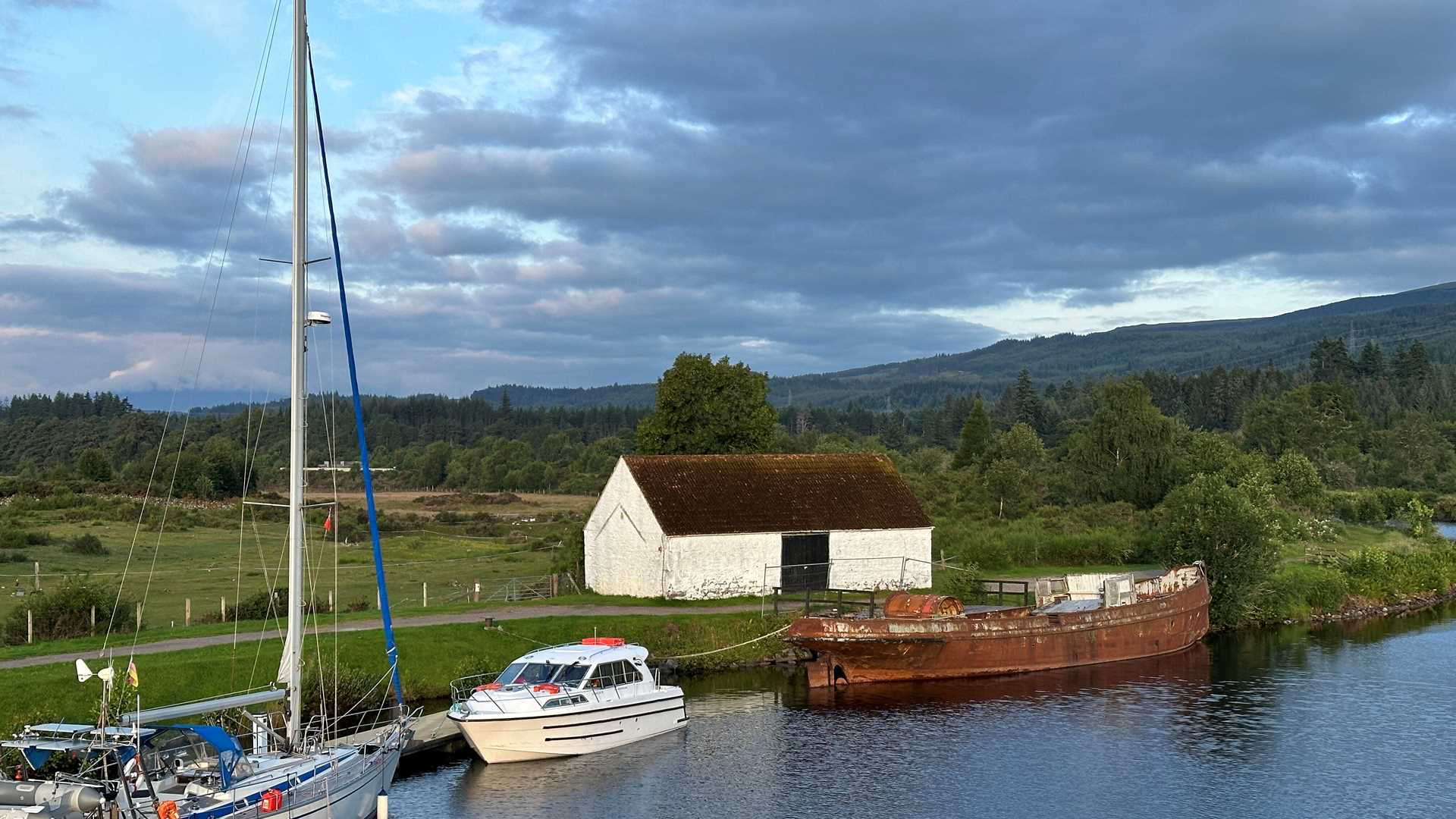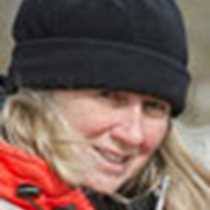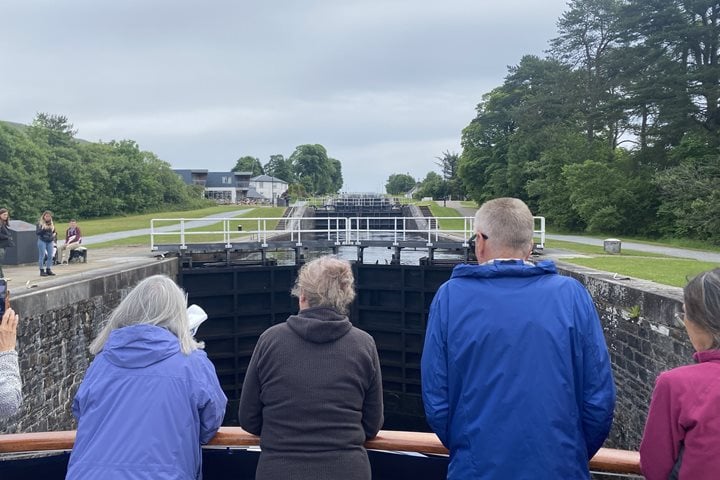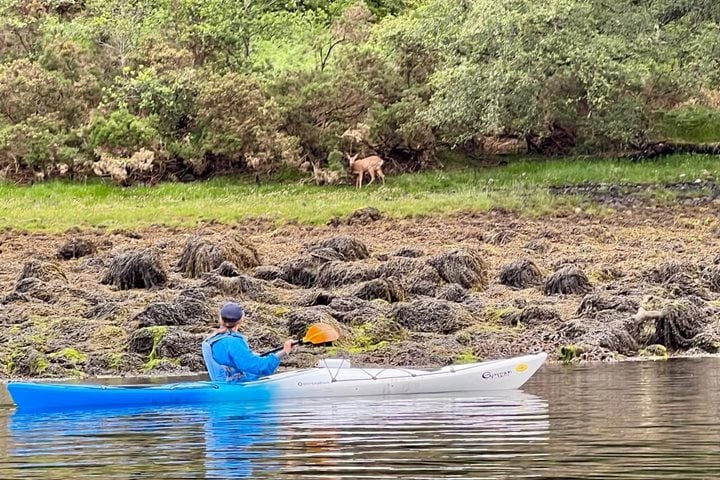There seems to be an order to the morning in a small Scottish town. Back home, the crow of a rooster might rouse one from a deep and comfortable slumber. Here in Fort Augustus, Scotland, the wood pigeon’s mournful call is the first sound of the day. Dainty common gulls respond, screaming as they circle the canal, perhaps in search of last night’s spoils. Lumps on the grassy verges morph into quacking mallards which rise as one and waddle toward the water. Silent rabbits are the next to stir as they hop from their burrows. We are somewhat slower. It is a vacation, after all, and there is no need to rise this morning until the lock keeper does the same, for our progress is determined by a series of steps to a lower water level.
Once underway, the locks are filled and emptied. A bridge pivots away and rapidly we merge into Loch Ness. Locks and lochs, how confusing! Typically, the weather in Scotland changes rapidly and dramatically. The scattered clouds of earlier merged into a dark grey mass, pouring out sheets of rain whipped by furious winds. The placid inland loch where Nessie is rumoured to live became a bumpy, corrugated road. Thank goodness we could retreat safely inside and still enjoy the view from the Lord of the Glens’ large picture windows. But, ever fickle, just as there was something new to see, the sun broke through, illuminating Urquhart Castle, once a bastion of conflict but now a busy tourist attraction.
It was sad to arrive at the pier today as tomorrow we depart and scatter around the world. But there was still more to explore before our hiking boots climbed into our suitcases. The National Trust Scotland Visitor Center at Culloden prepared our imaginations for a stroll around the battlefield where the Jacobite rebellion came to a catastrophic end on April 16, 1746. Hanoverian troops, both English and Lowland Scots, routed the ill-prepared and tired Highlanders fighting for Bonnie Prince Charlie, changing the future for a long time to come. Eventually, hundreds of thousands of Highlanders were cleared from their ancestral lands and forced to emigrate to Canada, the US, and Australia. Finally, we made a brief stop at Clava Cairns where we looked back even further into the past. A Bronze Age ring cairn and two passageway cairns looked as if they had been constructed just yesterday. We strolled between and around them, puzzling over the meaning of pathways radiating from the ring cairn and wondering what the standing stones were all about.
And then it was party time and the piping of the haggis as we celebrated our new friends and relived a marvellous week! And the rain came back and then it left again to remind us that we are in Scotland after all.







